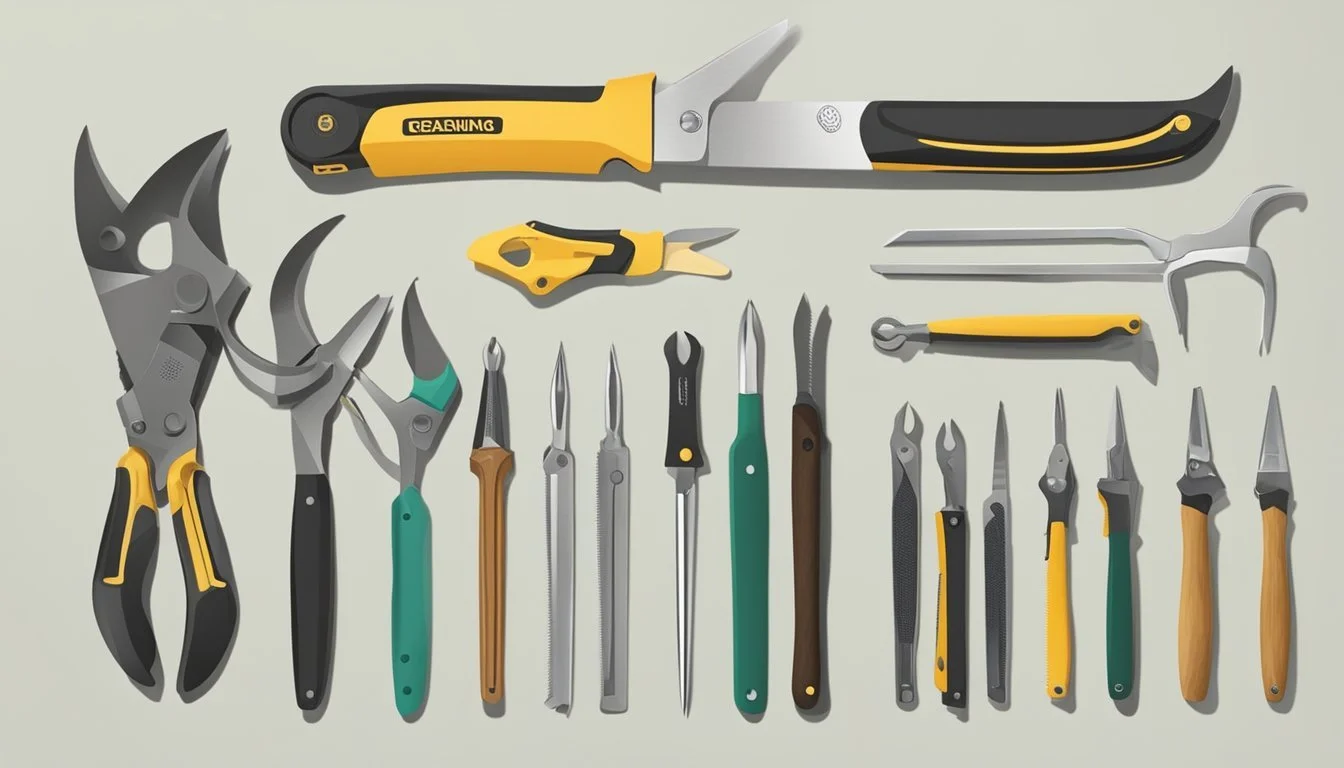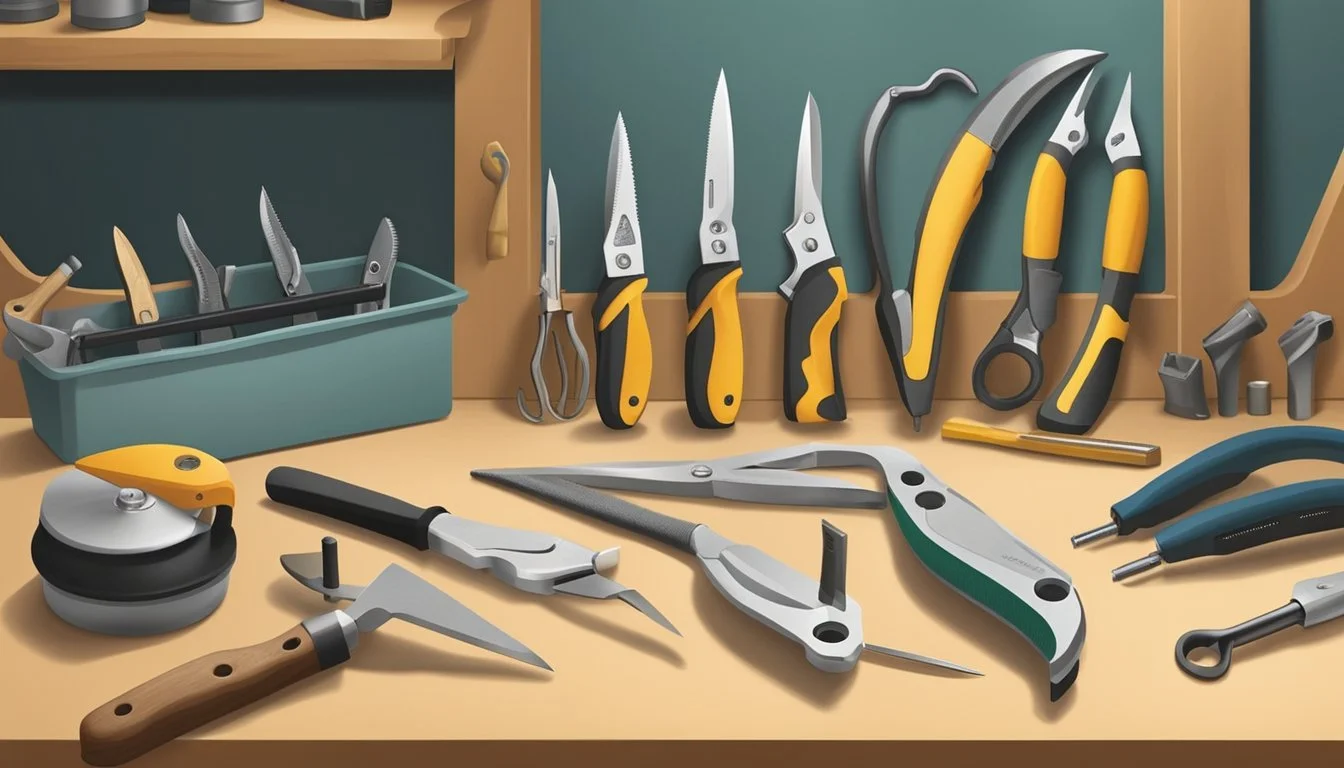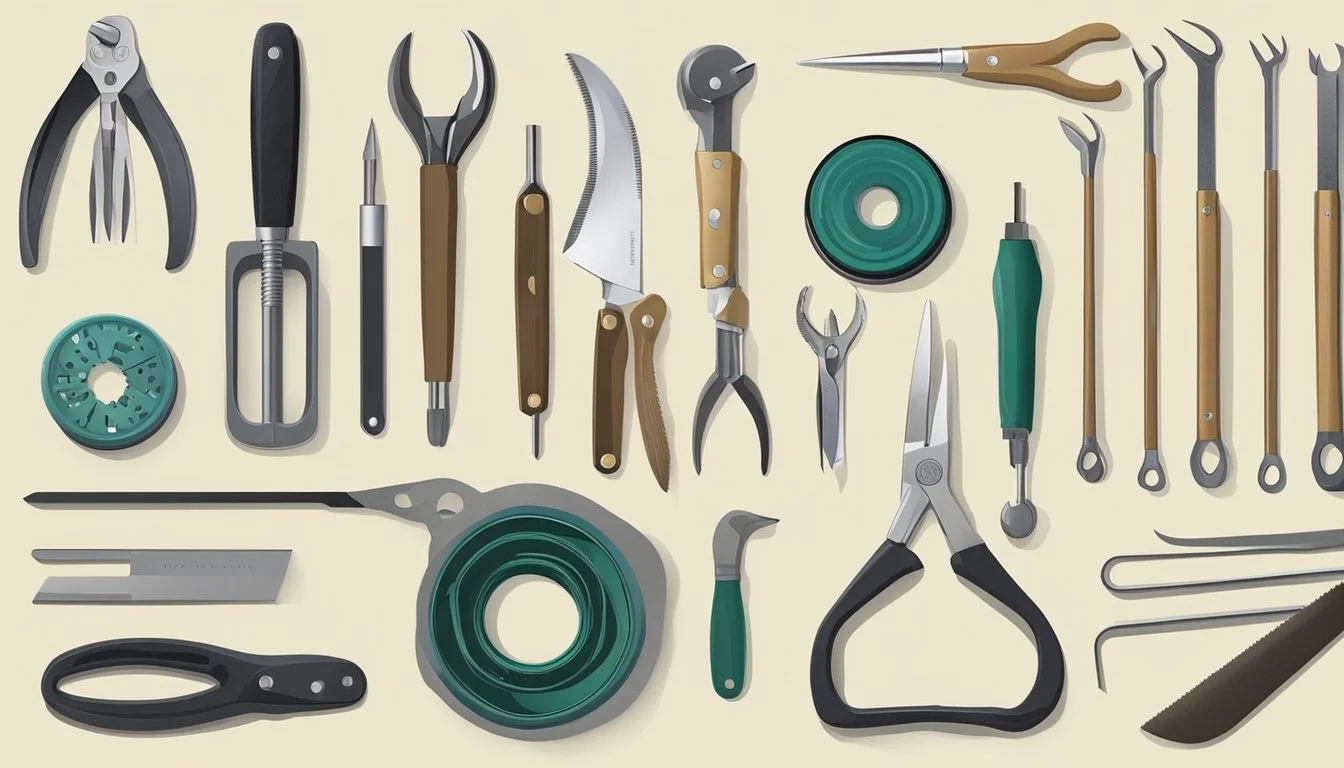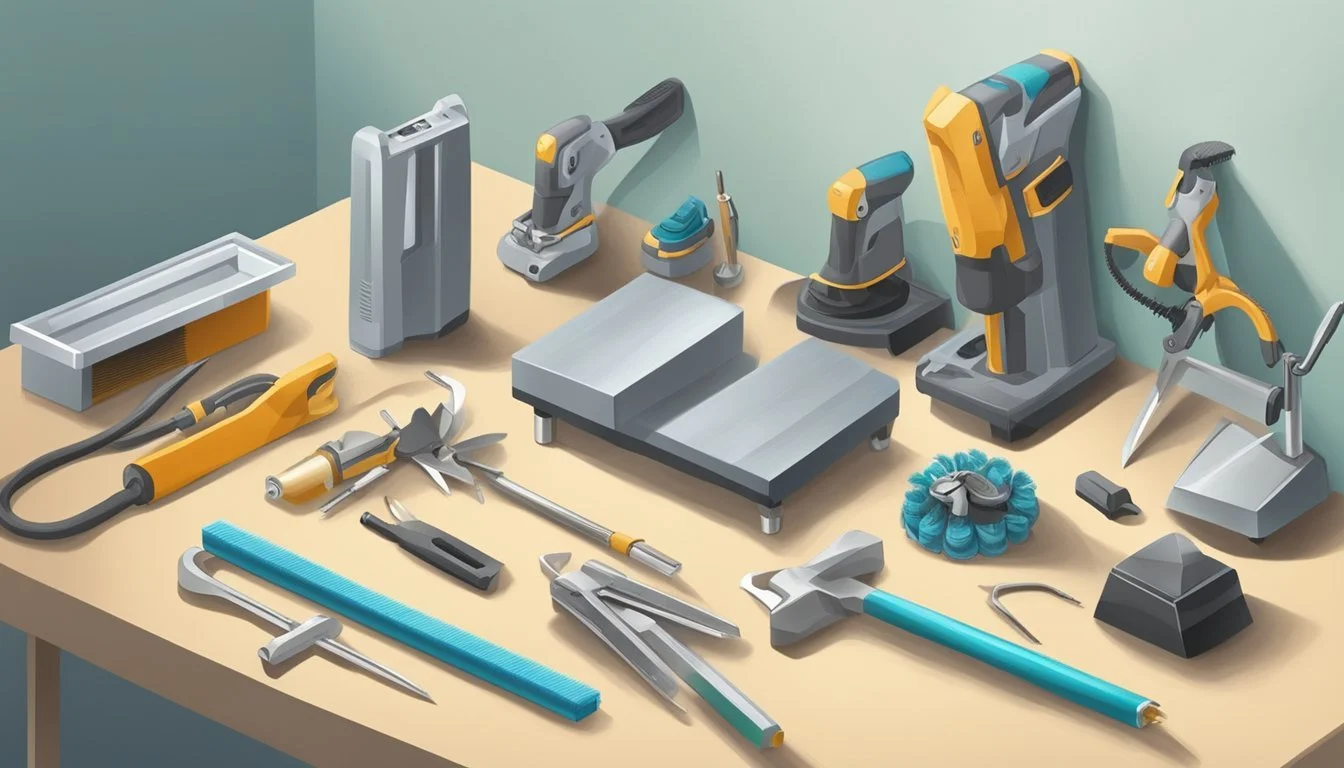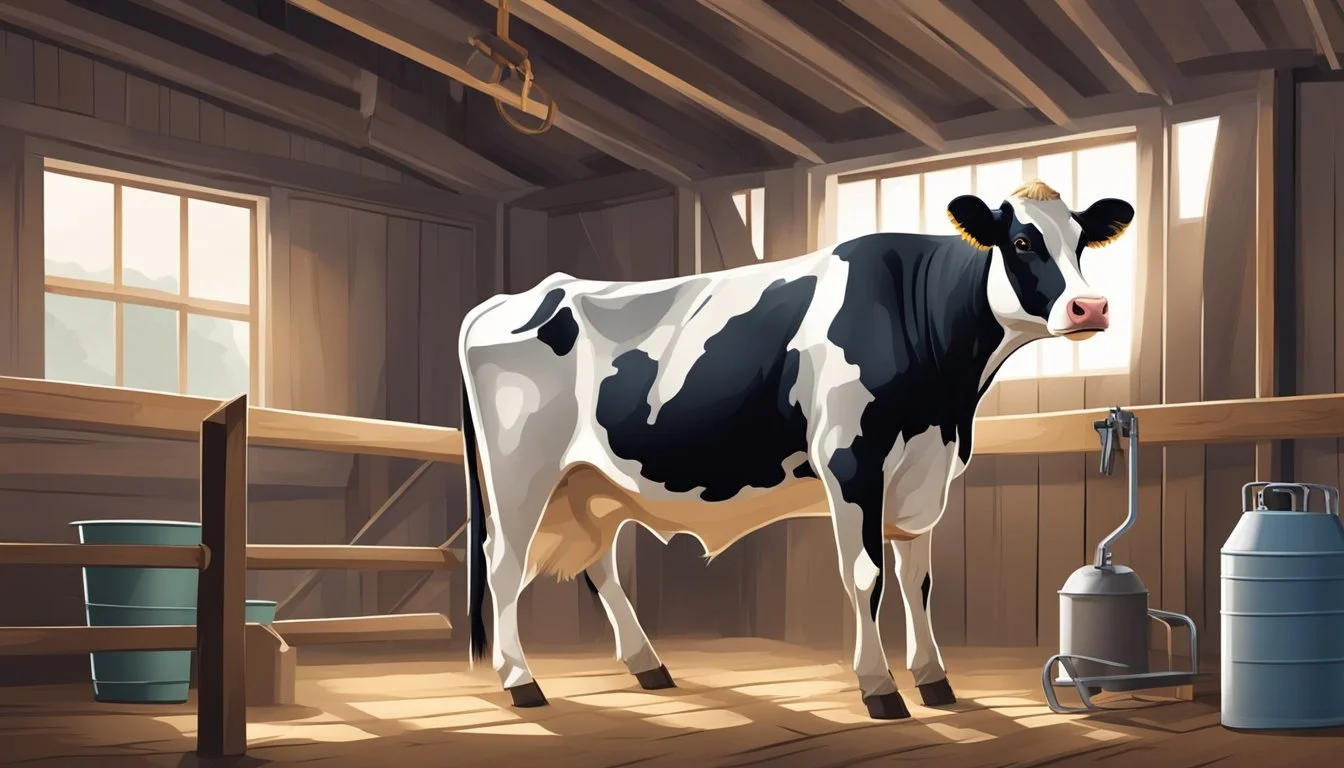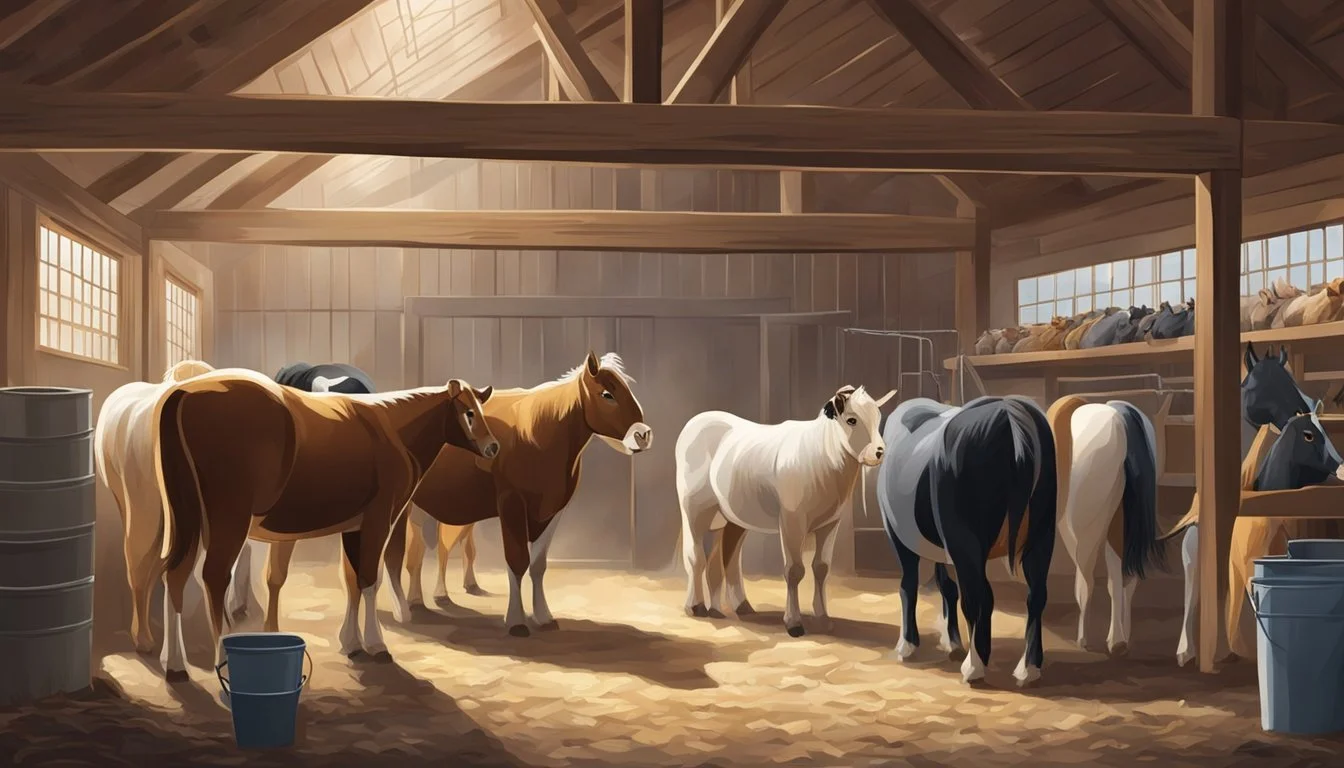The Ultimate Guide to Hoof Trimming Equipment
Essentials for Livestock Hoof Care
Hoof trimming is a critical component of livestock management that directly impacts animal well-being. The process not only helps in preventing lameness but also ensures that livestock maintain good hoof health, which is essential for their comfort and productivity. As such, the selection of appropriate hoof trimming equipment is not a decision to be taken lightly. Quality tools and machinery allow for precise, safe, and efficient hoof care, ultimately leading to a happier, healthier herd.
Incorporating the right hoof trimming techniques with the correct equipment is paramount. The equipment options range from simple hand tools for small-scale operations to advanced mechanical chutes for larger herds. Each tool or device plays a distinct role in maintaining the hoof's structure and integrity. Hoof trimming chutes, in particular, are essential for safely securing the animal, thereby allowing for accurate and thorough care.
Hoof health is influenced by various factors, including genetics, environment, and nutrition, but the significance of proper and regular hoof trimming cannot be overstated. Equipping oneself with a solid understanding of different hoof trimming equipment and their proper application is a step toward ensuring the longevity and well-being of the herd. Whether operated by a seasoned professional or an invested livestock owner, effective hoof trimming is an indispensable aspect of holistic animal care and management.
Understanding Hoof Health
In maintaining livestock health, special attention must be given to hoof care as it directly impacts animals' mobility and quality of life. A comprehensive understanding of hoof anatomy and the multifaceted factors influencing hoof health is vital for effective management and prevention of lameness.
Anatomy of the Hoof
The hoof is a complex structure that encases the lower part of the animal's limb, providing support and protection. It is made up of several key components:
The outer wall: A hard surface that bears the weight of the animal.
The sole: The bottom part of the hoof, which is also weight-bearing.
The frog: Functions as a shock absorber and aids circulation.
The digital cushion: Sits beneath the frog and provides cushioning.
Coffin Bone (Distal Phalanx): A bone enclosed within the hoof.
Healthy hooves have a specific shape and growth rate that must be consistently maintained. Hoof growth varies between individuals, and regular trimming is needed to keep the shape within the ideal parameters for weight distribution and gait.
Factors Affecting Hoof Health
Several factors contribute to overall hoof health:
Nutrition: Essential nutrients like zinc, copper, and biotin play critical roles in developing strong hooves as they aid enzymatic processes that are crucial for hoof integrity.
Environment: Soft, wet, or uneven ground can affect hoof shape and quality, leading to increased susceptibility to hoof diseases.
Genetics: Some animals are predisposed to weaker hooves, requiring more intensive management.
Hoof diseases such as sole ulcers, white line disease, and digital dermatitis can severely affect hoof health, leading to lameness and reduced wellbeing. These conditions frequently arise from neglect, improper hoof care practices, or unsanitary living conditions. Regular checks and maintenance are therefore imperative in ensuring hoof health and ultimately, the animal's productivity and comfort.
Essentials of Hoof Care
Effective hoof care ensures the longevity and well-being of livestock. Two pivotal aspects of hoof care are establishing a consistent schedule for hoof maintenance and providing proper nutrition essential for hoof health.
Setting Up a Hoof Care Routine
A hoof care routine is crucial for preventing lameness and other hoof-related problems. Routine trimming is the cornerstone of maintaining hoof shape and function. It typically involves four steps: cleaning the hoof, examining for problems, trimming excess growth, and smoothing rough edges. Livestock owners should implement a regular schedule, with trimming performed every 6 to 8 weeks, ensuring that hooves are inspected frequently for early detection of issues.
Nutritional Considerations for Optimal Hoof Health
Nutrition plays a significant role in the development and maintenance of healthy hooves. Livestock diets should be balanced and provide key nutrients such as zinc, copper, and biotin—all vital for hoof integrity.
Zinc: Essential for enzyme functions and keratin development in the hoof.
Copper: Involved in the formation of connective tissue and defense against hoof infections.
Biotin: Known to improve hoof hardness and elasticity.
Regular access to clean water and a clean living environment complement nutritional efforts to promote overall hoof cleanliness and health.
Equipment for Hoof Trimming
Proper hoof trimming is essential for livestock health, and having the right equipment is critical for precision and safety. Quality trimmers, nippers, and knives set the foundation for excellent hoof health management.
Choosing the Right Hoof Trimmers
When selecting hoof trimmers, one should prioritize tools designed for durability and precision cutting. Each piece of equipment serves a distinct purpose:
Hoof Nippers: They are used to trim and remove excess hoof material, with sizes varying to accommodate different hoof sizes. Ensure the nippers have sharp cutting edges for clean cuts.
Hoof Knife: A hoof knife’s purpose is to clean and trim the frog and other delicate areas of the hoof. It should fit comfortably in the hand, allow for precise control, and feature a sharp blade that retains its edge well.
Additional tools may include rasps for shaping and smoothing the hoof post-trim and a hoof pick for debris removal before the trimming process.
Maintaining Your Trimming Equipment
To ensure longevity and optimal performance of hoof trimming equipment, regular maintenance is crucial. Here are key aspects for maintaining your tools:
Hoof Nippers and Knives: Clean after each use and sharpen regularly to maintain cutting precision.
Hoof Trimming Chute Maintenance: For those employing a hoof trimming chute, routine checks and servicing are necessary to keep it functioning smoothly and safely.
A structured care regimen for your tools not only guarantees efficiency but also ensures the welfare of the livestock with consistently accurate and clean trims.
Hoof Trimming Techniques
Effective hoof trimming techniques are essential for maintaining livestock hoof health and preventing problems caused by overtrimming or undertrimming. Employing the proper procedure and techniques ensures the well-being and mobility of the animal.
Basic Trimming Procedure
The basic trimming procedure involves a step-by-step approach designed to maintain the natural shape of the hoof. It begins with cleaning the hoof using a hoof pick to remove debris and inspect for lesions or irregularities. Next, using nippers, the trimmer cuts away excess length from the hoof wall, taking care not to remove too much and cause soreness. Hoof knives are used to carefully trim the sole and frog of the hoof, again being cautious to avoid deep cuts that can lead to infections or lameness. Then, a rasp is used to smooth out rough edges and create an even, level surface on the bottom of the hoof. This step is crucial to ensure that the weight is distributed evenly across the hoof, which is vital for proper hoof growth and leg alignment.
Tools Needed:
Hoof pick
Nippers
Hoof knife
Rasp
Procedure:
Clean the hoof with a hoof pick.
Trim the hoof wall with nippers.
Shape the sole and frog with a hoof knife.
Smooth the hoof with a rasp.
Advanced Techniques for Problematic Hooves
When addressing problematic hooves, more advanced trimming techniques may need to be employed. Animals with hoof deformities or those suffering from lesions may require a careful and more strategic approach.
One such advanced technique is the treatment of white line disease, wherein the hoof wall is carefully trimmed to remove the diseased tissue and allow air to reach the affected area, aiding in recovery. Hoof testers are often used to diagnose sensitive areas or potential problems before they become severe.
It's crucial when dealing with problematic hooves to evaluate the cause and adjust the trimming technique accordingly. Overtrimming can lead to sensitivity and possibly lameness, while undertrimming may not resolve the existing issue. Trimmers should monitor the animal's gait post-trimming to ensure the comfort and proper movement. In the case of recurring issues or severe lesions, consultation with a veterinarian or a professional farrier may be necessary to devise an appropriate treatment plan.
Advanced Considerations:
Identifying the problem and its severity
Adjusting the trimming method to address specific hoof issues
Monitoring the animal's comfort and gait after trimming
Techniques:
White line disease requires the removal of diseased tissue.
Use of hoof testers to diagnose potential hoof problems.
Preventing and Managing Hoof Diseases
Effective hoof disease management in livestock combines proactive identification and treatment of issues with environmental control to prevent disease occurrence. It is a critical aspect of herd health that veterinarians often address to prevent lameness and ensure animal welfare.
Identification and Treatment
Identification of hoof diseases such as digital dermatitis, a bacterial infection, and other ailments caused by fungi or bacteria, is the first step in managing hoof health. Veterinarians should conduct regular hoof examinations and implement disease surveillance protocols. When a disease is identified, treatment should be prompt and specific to the condition:
Digital Dermatitis: Disinfect and apply topical antibiotics.
Laminitis: Reduce weight on the affected limb and provide anti-inflammatory medication.
Interdigital Dermatitis: Cleanse the area and use an appropriate antibiotic or antifungal.
It is essential to track treatment outcomes and adjust protocols based on veterinary guidance to minimize infection recurrence.
Environmental Management for Disease Prevention
Preventing hoof diseases involves managing environmental factors carefully. Preventing lameness begins with good environmental management, including:
Flooring: Ensure surfaces are not highly abrasive to avoid excessive wear of the hoof and are not too slippery to minimize the risk of falls.
Floor Type: Concrete
Description: Durable and easy to clean
Consideration: Can be harsh on hooves; use with proper bedding
Floor Type: Rubber
Description: Offers more cushioning
Consideration: Reduces the risk of injury and can improve cow comfort
Cleanliness: Regularly clean living spaces to reduce disease-causing organisms.
Maintain dry conditions to prevent bacterial and fungal growth.
Implement waste management systems to decrease the spread of infection.
Effective disease prevention includes routine hoof trimming at least once or twice a year—ideally at dry-off and around 100 days in milk—to maintain hoof stability and even weight distribution. Through careful planning and execution of these management practices, the prevalence of hoof diseases can be significantly reduced, enhancing the overall health and productivity of the herd.
Incorporating Professional Hoof Care
Professional hoof care is paramount in maintaining livestock health. With the right expertise, routine issues can be addressed and potential problems preemptively managed to ensure the wellbeing of the herd.
When to Seek Professional Assistance
Professional hoof trimmer: It is imperative to enlist a professional hoof trimmer when livestock display signs of lameness, uneven wear, or overgrown hooves. These specialists are trained to correct hoof issues with precision and to prevent further complications that could impair mobility and overall health.
Signs that prompt professional intervention:
Lameness or indications of discomfort while walking
Visible deformities in hoof structure
Overgrowth beyond typical standards
Repeated instances of hoof diseases
Veterinarians: For more complex hoof health issues, such as infections or severe injuries, seeking advice from veterinarians is crucial. They provide medical treatment and can also advise on long-term care strategies for hoof health management.
Educational Resources for Hoof Care Management
Education: Enhancing one's understanding of hoof care is beneficial for animal owners and caretakers. Training courses and materials from hoof health professionals deliver insights on maintenance, disease prevention, and early detection.
Key educational resources:
Workshops and seminars by hoof care experts
Online courses and video libraries focused on hoof care techniques
Comprehensive guides and textbooks authored by professionals
Professional advice: Regular consultations with hoof care experts can bridge gaps in knowledge and skill. They often share best practices in hoof trimming and tailored care routines based on individual livestock needs.
Impact of Hoof Health on Livestock Productivity
The health of livestock hooves directly correlates with overall productivity, influencing both mobility and milk production capacities of dairy cattle.
Hoof Health and Animal Mobility
Mobility is critical for livestock, especially for grazing and accessing resources. Poor hoof health can compromise gait, leading to uneven weight distribution and thus impacting the animal's ability to move freely. Livestock with hoof issues may demonstrate a decreased willingness to move which in turn can affect their ability to graze and mate, ultimately reducing productivity levels.
Hoof Health and Milk Production
In dairy cattle, hoof health significantly affects milk production. Animals suffering from hoof problems may experience stress and pain, which can lead to a reduction in feed intake and consequently, milk yield. Efficient weight distribution and comfortable movement are essential for maximized milk production, making regular hoof maintenance a priority for optimal animal welfare and profitability in dairy operations.
Leveraging Technology for Hoof Health
Incorporating advanced technologies into hoof care strategies enables farmers to improve the management and effectiveness of hoof trimming programs.
Monitoring Tools and Techniques
Modern monitoring tools play a crucial role in capturing and analyzing hoof health data. Effective management of hoof health begins with regular assessments and recording of hoof conditions. Technologies such as digital cameras and scanners allow for detailed inspections and aid in creating precise lesion records. For example, use of thermal imaging can detect early signs of inflammation and other anomalies that are invisible to the naked eye. The gathered hoof lesion records provide valuable insights over time, allowing farmers to track the progress of individual animals and make informed decisions concerning their hoof trimming program.
Techniques for Monitoring:
Regular visual assessments
Use of thermal imaging cameras
Digital scanning for precise measurements
Connected Farm Management Systems
Connected farm management systems are integral to modern hoof care management. These systems consolidate various data points, such as lesion records and trimming schedules, into a central platform. This centralization facilitates better coordination and scheduling of hoof trimming procedures, ensuring that they are carried out in a timely and effective manner. Furthermore, by integrating with other farm monitoring systems, they provide a comprehensive overview that helps in the early detection and treatment of potential hoof health issues.
Benefits of Connectivity:
Centralized management of hoof health data
Efficient scheduling of trimming procedures
Integration with overall farm health monitoring
By embracing these technological aids, farmers can adopt a proactive approach to hoof care, ultimately leading to healthier livestock and potentially reducing long-term costs associated with hoof ailments.
Age and Breed Considerations
When assessing hoof care needs, one must take into account the specific requirements of different ages and breeds within livestock populations. Proactive measures tailored to these variations ensure optimal hoof health.
Tailoring Trimming to Age and Breed
Livestock, such as dairy cows and beef cattle, exhibit different hoof growth rates and potential issues based on their age and breed. For instance, younger animals may require more frequent trimming as their hooves grow quickly during development stages. In contrast, older dairy cows, which spend more time on hard surfaces, may need additional attention to address wear and prevent overgrowth.
Dairy Cows: Dairy breeds often need trimming every 6 to 8 weeks due to their heavier milking schedules and stabling environment.
Beef Cattle: Beef breeds typically require less frequent care, as they roam more and naturally wear down their hooves.
Breed plays a significant role, with some breeds predisposed to hoof problems and others boasting more robust hooves. Trimming schedules and techniques must be adjusted accordingly to accommodate these genetic predispositions.
Genetic Improvement for Hoof Health
Selective breeding programs strive to enhance hoof health by promoting traits associated with strong, disease-resistant hooves. Genetic improvement initiatives focus on two primary objectives:
Reducing hoof disease incidence: By prioritizing traits such as hoof conformation in both dairy and beef breeds, farmers can lower the occurrence of lameness.
Increasing resilience: Breeds known for better hoof quality can contribute to the genetic pool, ensuring offspring with sturdier hooves that demand less intervention.
These efforts reduce the need for invasive procedures and promote overall herd welfare, ultimately contributing to more sustainable livestock management.
Optimal Livestock Housing and Bedding
The health and productivity of livestock are heavily influenced by their living conditions, which include their housing and bedding. These elements play a crucial role in hoof care and should be designed to promote animal well-being.
Creating a Healthy Living Environment
Livestock housing should provide ample space for animals to move, rest, and exhibit natural behaviors. Ventilation is essential to maintain air quality and control humidity levels, which, if not managed properly, can contribute to hoof problems. Bedding materials like straw or wood shavings should be used to offer a soft surface for animals to lie on, which aids in preventing pressure sores and improves overall comfort. Regular inspection and maintenance ensure that bedding remains clean, dry, and free from contaminants that might harm hoof integrity.
Ventilation: Maintain good air flow.
Bedding Materials: Use quality straw or wood shavings.
Maintenance: Regular cleaning and replacement to keep bedding optimal.
The Role of Flooring and Cleanliness
Flooring within livestock housing must balance durability with hoof health considerations. Flooring that is too abrasive or too slippery compromises hoof structure and increases the risk of slips and falls. For instance, concrete floors, while being easy to sanitize, can be tough on hooves if not textured or covered properly. Cleanliness is crucial; floors should be routinely cleaned to minimize the buildup of waste materials that can harm hoof health. Ideal flooring options should provide a non-slip surface that doesn't cause excessive wear on hooves.
Concrete Floors: Ensure they are not overly abrasive or slippery.
Floor Cleanliness: Implement a consistent cleaning schedule.
Surface: Choose non-slip options to protect against wear and accidents.
Designing an Effective Trimming Schedule
The health and productivity of livestock depend significantly on maintaining proper hoof care. An effective trimming schedule is a critical component of overall herd management, influencing the well-being of the animals throughout various stages, such as lactation and calving.
Frequency of Trimming
The frequency of trimming is determined by several factors, including the animal's breed, age, rate of hoof growth, and the environment in which they are kept. Generally, cattle hooves are trimmed every six months, while horses may require trimming every six to eight weeks. A routine schedule might look as follows:
Cattle: Every 6 months
Dairy Cattle during Lactation: More frequent, as advised by a veterinarian
Horses: Every 6 to 8 weeks
Adhering to such a schedule can help prevent overgrowth and subsequent hoof problems, which could lead to lameness.
Adjusting Schedules for Specific Needs
Adjustments to the trimming schedule may need to be made based on specific needs of the livestock. For example, dairy cows might need trimming more frequently during lactation periods due to the added weight and stress on their hooves. Additionally, the time around calving is sensitive; trimming should generally be avoided 21 days before and after calving to minimize additional stress.
When setting up a trimming schedule for a herd, one must consider:
Herd Management: Tailor the schedule to the flow of production, such as breeding cycles and milking routines.
Environmental Conditions: Wet conditions may necessitate more frequent trimmings due to softer hooves which are more prone to damage.
Proper scheduling ensures that all individuals in a herd receive optimal hoof care tailored to their circumstances, promoting overall health and productivity.
Preventive Measures and Long-Term Strategies
Effective hoof trimming equipment is essential for maintaining optimal livestock hoof health. This section will explore practical programs and management practices aimed at preventing lameness and promoting healthy hooves.
Lameness Prevention Programs
Preventive measures, such as implementing a Lameness Prevention Program, are critical in maintaining hoof health. These programs often include:
Regular Trimming Schedules: Ensuring that hooves are trimmed at least once or twice annually, tailored to individual cow needs.
Environmental Management: Minimizing exposure to harmful debris and maintaining clean, dry bedding to reduce the chance of hoof injury and disease.
Regular monitoring and professional assessments by hoof trimmers and veterinarians can identify early signs of potential problems, reducing the risk of lameness.
Assessing and Improving Herd Management Practices
Long-term strategies for hoof health involve a thorough assessment and improvement of overall herd management practices, including:
Injury Prevention: Routine checks for hazards in the environment that could cause hoof injuries.
Herd Nutrition: Ensuring a balanced diet that meets the nutritional needs, supporting strong and healthy hoof growth.
By systematically addressing these areas, farmers can uphold standards that not only prevent lameness but also contribute to the welfare and productivity of their livestock.

